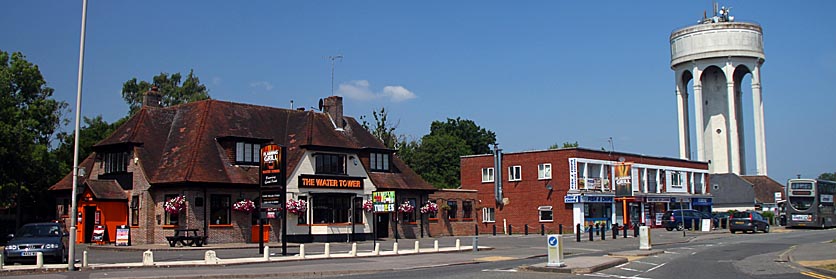 |
 |
|||
|
|
Tilehurst Tiling Centre near Reading
Tigel-Hurst was the original name of the village: the "Tile-Wood" where kilns have made tiles from the Thames Valley Clay since Saxon times. King Alfred himself is said to have fought the Danes in Dark Lane, once known as Deadman's Lane after the numerous bodies of the enemy slain there. The story may hold some truth, for there were many skirmishes in this area when the Danes held Reading as their British Headquarters. Tilehurst was made up of a number of manors, the chief of which, Tilehurst itself, had its manor house at Calcot Park. In the 14th century, the manor of Kentwood was owned by Sir John Kentwood, a good friend of the Black Prince who captured the son of the King of France at the Battle of Poitiers. His son, Reginald, became the Dean of St. Paul's Cathedral in London. Tilehurst Church dates in part from the late 13th century. From about this time, until the dissolution it was served by the brethren of Reading Abbey. Today it has a large spire, but it original had a fine Georgian brick tower that was remodelled in Victorian times. Inside there is a fine renaissance monument to Sir Peter Vanlore, a Dutch merchant, banker and money-lender who made enough money to purchase the Manor of Tilehurst in 1604: When thou hast read the name
"Here lies Vanlore" William Lloyd, Bishop of St. Asaphs, was born in Tilehurst in 1688. His career was not without controversy in a time of religious upheaval. He was a staunch supporter of the Protestant King William III and assisted at his coronation. In later life, he proclaimed himself something of a profit! Prospect Park, in the village, was constructed around Dirle's Farm in the mid 18th century by Benjamin Child, one time Lord of the Manor in right of his wife, Frances Kendrick. He had retained this piece of land when he sold Calcot House up to the Blagraves, in 1755, because it was the place where he had agreed to marry his notorious spouse. Having fallen head over heals in love with him, Frances had appeared in disguise and, at sword-point, challenged him to fight or marry her. He sensibly decided to plump for the latter option and the two were very happy together for many years. The area is said to be haunted by Frances' ghost. See also Calcot and Theale in the Parish
|
|||
| © Nash Ford Publishing 2001. All Rights Reserved. | ||||



